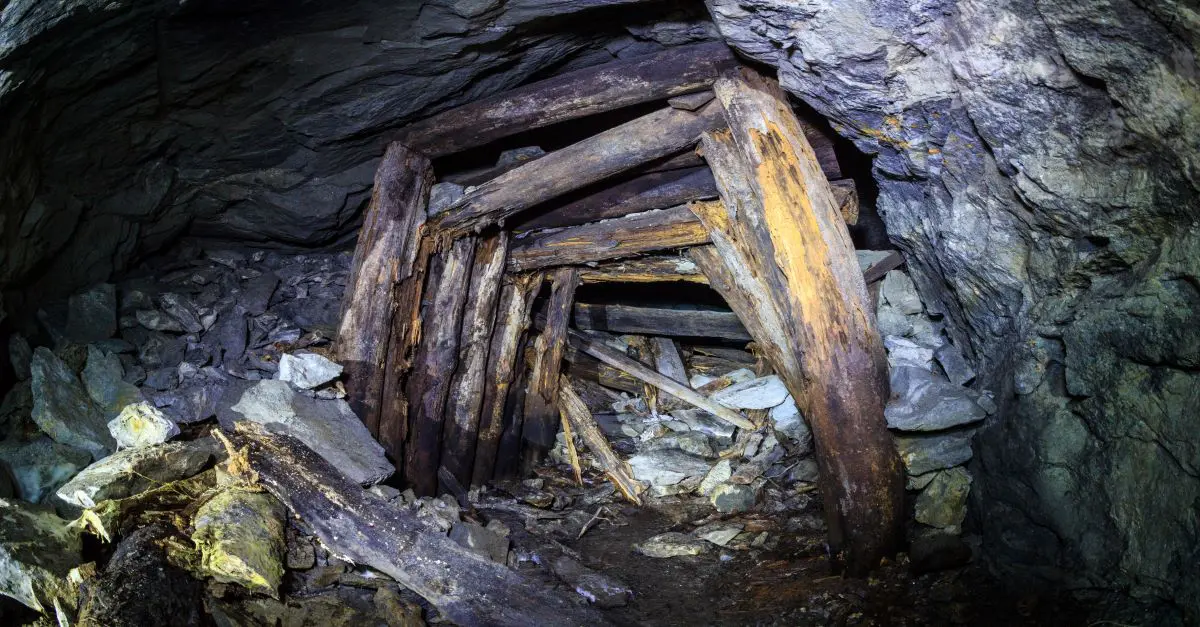
Before the 1970s, hard rock mine operators could dig for profitable hard rock minerals like gold or copper before abandoning the mining location and moving onward to find other prospective lands. About 140,000 relics of these hard rock mines, including unprotected tunnels and toxic waste dumps, have been found in areas under the control of federal agencies.
Remedies to address safety and environmental risks include sealing tunnels and purifying contaminated water, but effective remedies can be expensive. However, recent funding decisions made by recent legislation1 may make this more of a reality for existing impacted communities.
Mines that have been abandoned pose a long-term threat to public safety, health, and the environment. People who live nearby are put in peril by toxic mine wastes, which also kill aquatic life downstream and contaminate essential groundwater resources. Many potentially fatal pollutants can be found in mine tailings, including arsenic, asbestos, cadmium, copper, cyanide, iron, lead, mercury, sulfur, and zinc.2 In addition, mine wastes may be soluble and moveable.
Waste piles can be eroded by wind and rain, releasing toxic wastes as airborne pollutants and acid runoff that travels to adjacent (and occasionally far-off) waters. Mine effluents are an increasing hazard to subsurface aquifers and have already contaminated 12,000 miles of the nation’s streams and 180,000 acres of our lakes and reservoirs.3
Abandoned mine rehabilitation
Before the federal government imposed rules in the 1970s requiring mine operators to reclaim the land once their activities ended—for instance, by regrading or reshaping the damaged soil—a mine operator could extract hard rock minerals and depart the mine without reclaiming it. A US government report, Abandoned Mine Lands: A Decade of Progress Reclaiming Hardrock Mines, claims that as population centers in the western United States increase, previously distant abandoned mines are now considerably closer to population centers.4
Funding for these improvements is allocated annually through the Department of the Interior. This funding can be monumental in rehabilitating the communities and ecosystems impacted by hard rock mining.
During surface and coal mining activities, the Office of Surface Mining, Reclamation, and Enforcement safeguards people and the environment. The Office also seeks to restore and utilize former mine sites. The regulation and supervision of governmental programs is the main method used to carry out these tasks.
Fees paid by current coal mining firms are used by the Abandoned Mine Land (AML) Reclamation Program to reclaim coal mines that were abandoned before 1977.5 As a result, both the environment and humans are safer in these locations. The Surface Mining Control and Reclamation Act (SMCRA) established this program in 1977. The act’s provisions set requirements for contemporary coal firms, who must rehabilitate old mining areas while mining new ones and post bonds to pay the costs if they are unable to do so.
Recent legislation
On November 2, 2022, eligible states and tribes will be able to apply for grants through the Office of Surface Mining Reclamation and Enforcement (OSMRE), with funding from the fiscal year 2022 totaling $122.5 million.6 With the help of these funds, local businesses will be able to invest in projects that will produce union employment with competitive wages and long-term, sustainable mine site rehabilitation.
Historically, these rehabilitation programs usually serve communities by creating opportunities for these communities in pursuit of energy production. For instance, a groundbreaking “energy technology testbed” will build laboratories on some of Southwest Virginia’s 100,000 acres of old coal mine sites in order to support energy innovation.7
These promising innovations, the support towards energy production, and the search for efficient and cleaner practices are indicative of progress; however, there remains an overwhelming amount of work to make land with abandoned mines safe. Our nation is going through a period of change that is altering the way we produce, transport, store, and use energy. Every day, new energy technologies are developed, and they need to be thoroughly vetted to guarantee that they not only have the potential for commercialization but also deliver the affordable, clean energy that the market requires.
AMLER program
Launched in 2016, the AMLER program provides funding for initiatives that use economic and community development to repurpose former coal mining areas.8 By funding initiatives to close hazardous mine shafts, stabilize unstable slopes, enhance water quality by treating or removing acid mine drainage, and repair other water sources damaged by mining, AML reclamation programs enable the creation of desperately needed jobs for coal communities. By converting these abandoned or polluted properties into recreation areas, training facilities, agricultural processing facilities, business parks, solar farms, and other uses, the AMLER program provides vital assistance in furthering community rehabilitation.
AMLER program eligibility
The program aims to investigate and put into practice methods for repurposing abandoned coal mines for economic and communal development. The AMLER program promotes local investment options for the long-term, sustainable recovery of the economies of coalfields. The Office of Surface Mining Reclamation and Enforcement (OSMRE), which oversees the AMLER program, offers funds to qualified states and tribes, as well as information on project eligibility and reporting requirements.
Specific criteria are in place that determine a site’s eligibility under the AMLER program, depending on if it’s:
- Non-reclaimed Priority 1, Priority 2, or Priority 3 sites—such as AML lands’ polluted waters—that are listed in eAMLIS,
- AML land previously reclaimed and polluted waters, and
- Land adjacent to previously reclaimed AML lands and environmental pollution.
Sites eligible for this program will benefit from the recent decisions to increase funding to select areas impacted by abandoned mining. These practices have created long-term impacts on the communities they serve; however, the opportunity exists for these areas to be used in beneficial and creative ways as we pursue cleaner and more efficient energy solutions moving forward.
References
1 S. 3571-Good Samaritan Remediation of Abandoned Hardrock Mines Act of 2022. https://www.congress.gov/bill/117th-congress/senate-bill/3571/text
2 EPA: Hardrock Mining: Environmental Impacts. https://www3.epa.gov/npdes/pubs/env.htm
3 Lyon, J. S. (1993). Burden of gilt: The legacy of environmental damage from abandoned mines, and what America can do about it. Mineral Policy Center.
4 Forest Service and Bureau of Land Management. Abandoned Mine Lands: A Decade of Progress Reclaiming Hardrock Mines, FS-891 and BLM-WO-GI-07-013-3720 (Washington, D.C.: September 2007). https://www.blm.gov/sites/blm.gov/files/uploads/AML_PUB_DecadeProgress.pdf
5 U.S. Bureau of Land Management. (n.d.). Abandoned Land Mines | Bureau of Land Management. U.S. Department of Interior – Bureau of Land Management. https://www.blm.gov/programs/public-safety-and-fire/abandoned-mine-lands
6 U.S. Department of the Interior, Interior Department Announces $122.5 Million for Abandoned Mine Land Economic Revitalization Grants. Press Release 11/2/2022. https://www.doi.gov/pressreleases/interior-department-announces-1225-million-abandoned-mine-land-economic-revitalization
7 Governor Glenn Youngkin Announces Energy Technology Testbed will be Developed in Southwest Virginia. (n.d.). Governor.Virginia.gov. https://www.governor.virginia.gov/newsroom/news-releases/2022/october/name-940692-en.html
8 Abandoned Mine Land Economic Revitalization (AMLER) Program | Office of Surface Mining Reclamation and Enforcement. (n.d.). https://www.osmre.gov/programs/reclaiming-abandoned-mine-lands/amler
Accelerate Your Lab's Success & Experience LabLynx
"*" indicates required fields
Explore the LabLynx Suites

LIMS Suite
Seamless Sample and Workflow Management
The LabLynx LIMS Suite empowers laboratories with the tools needed to manage samples, workflows, compliance, and more in one centralized system. It’s the backbone for labs seeking efficient, reliable, and scalable management solutions.

ELN Suite
The LabLynx ELN Suite offers a modern approach to managing lab data and experiments. With its secure, intuitive platform, your team can record, store, and collaborate effortlessly, supporting innovation every step of the way.

Lab Automation
Automate for Efficiency and Growth
Streamline operations and boost productivity with the LabLynx Lab Automation Suite. Designed for labs ready to embrace advanced automation, this suite integrates systems, instruments, and workflows to deliver efficiency at scale.
